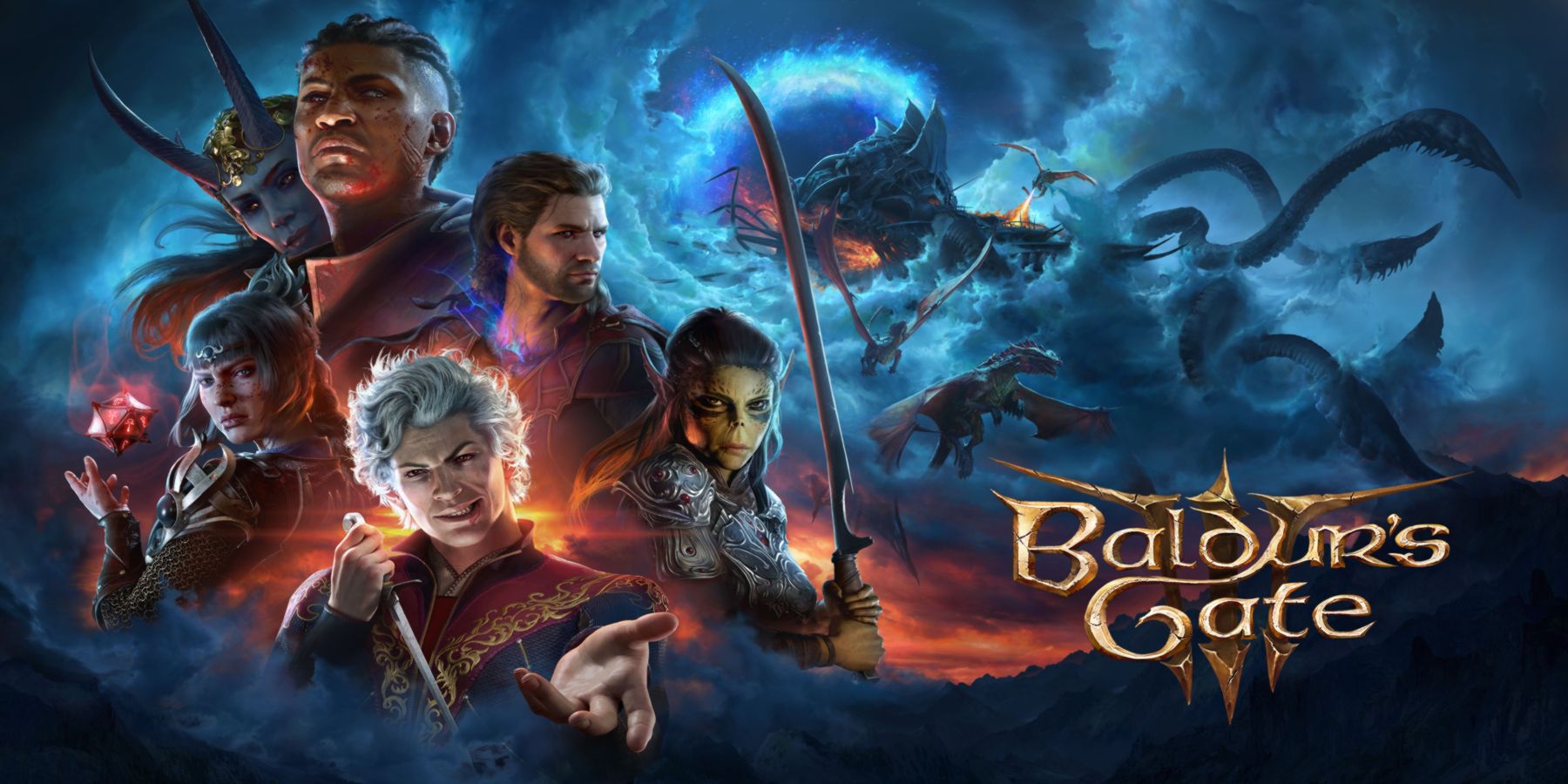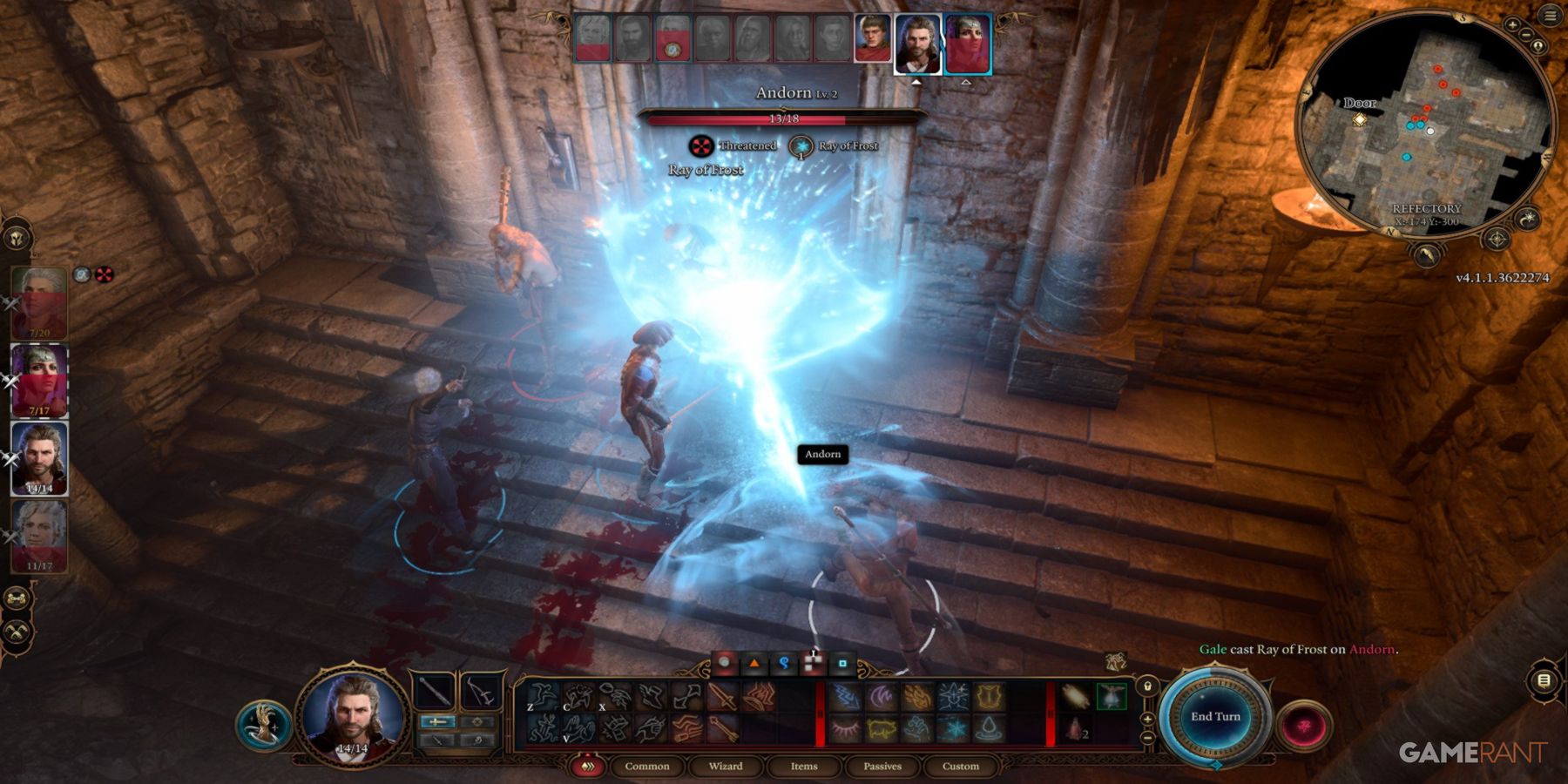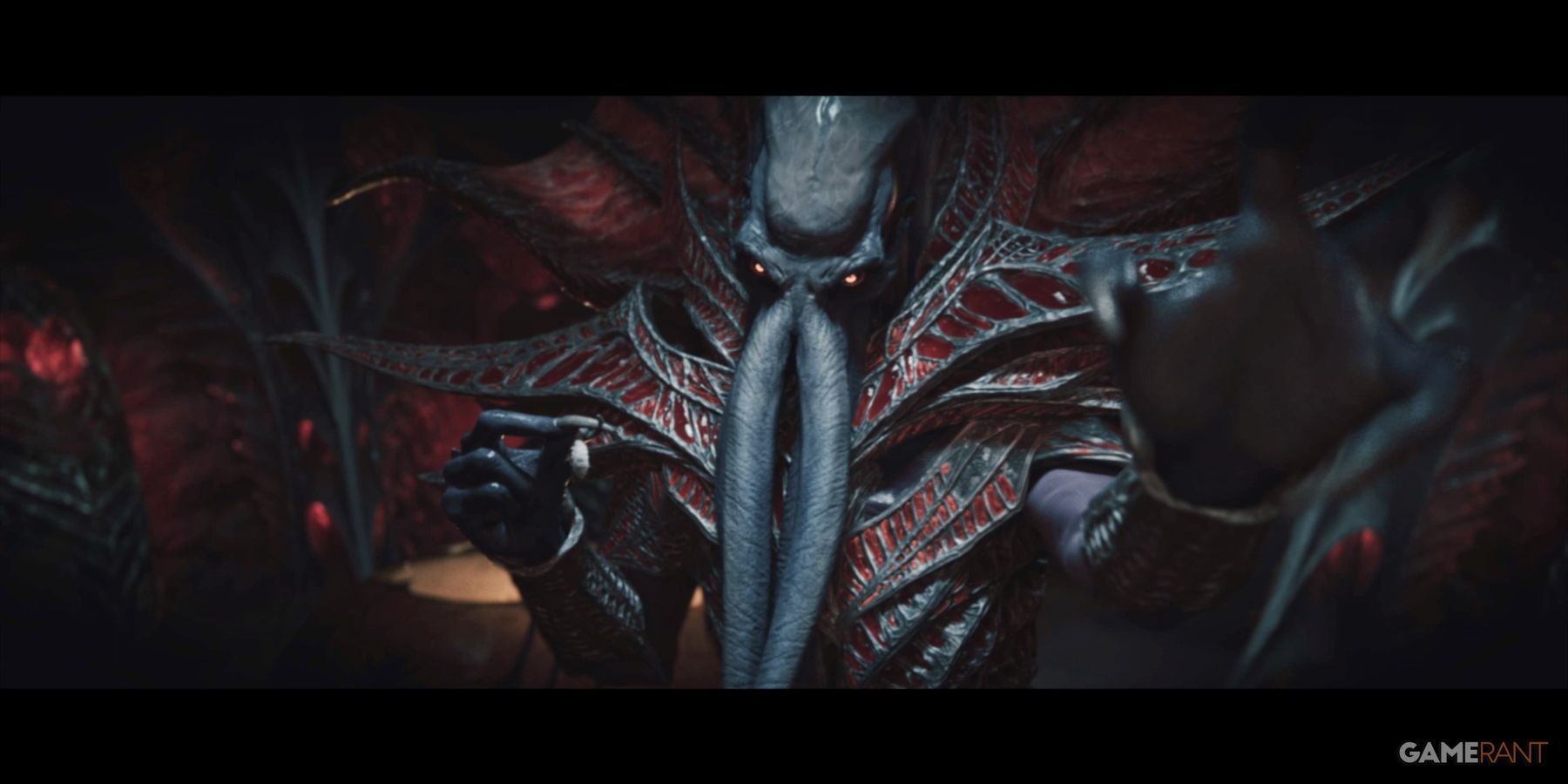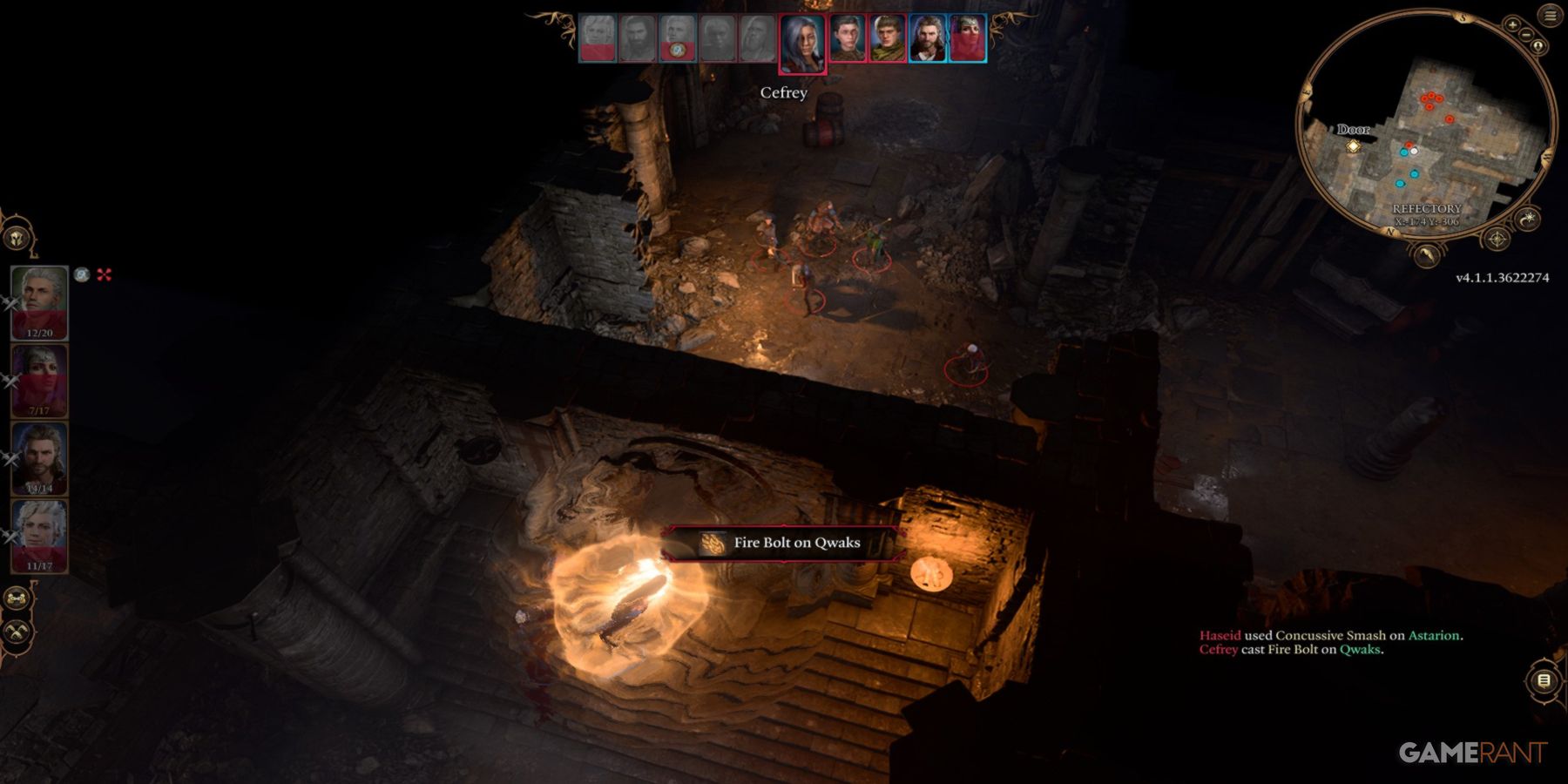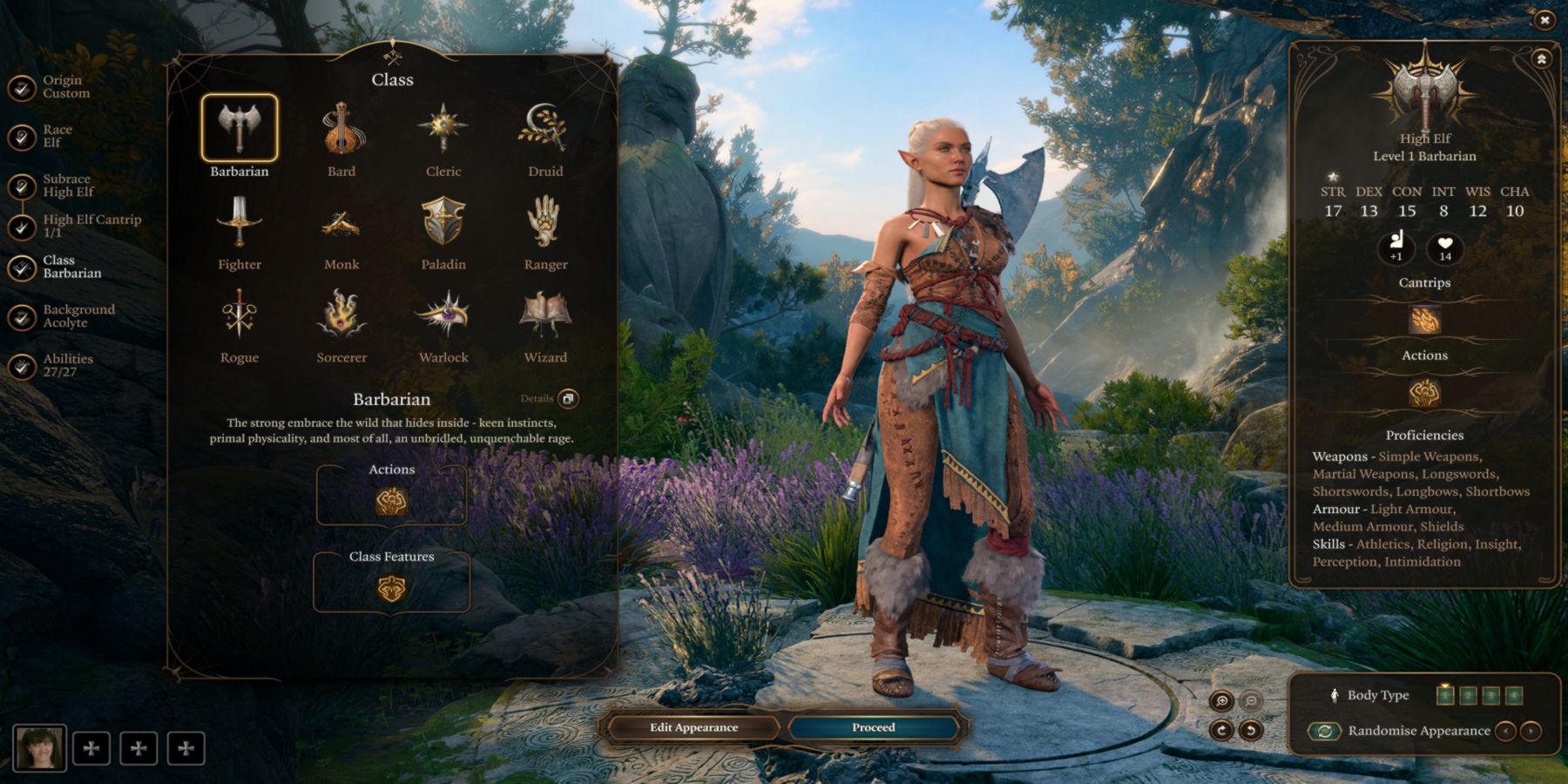It has been almost three years since Larian Studios announced that it would be tossing the early access build of Baldur’s Gate 3 to its ravenous fans. Its release boosted the hunger for a new entry in a series that undoubtedly helped the RPG genre cement its legacy in the gaming landscape. With Baldur’s Gate 3’s full release, a new era for the title begins in earnest, showering players with a truly awe-inspiring amount of information, options, and opportunities to be had in a game that never seems to lack something to do.
The developers at Larian Studios have put so much work into weaving Dungeons & Dragons and its various systems directly into the game that it sometimes looks and feels as if users are simply playing D&D virtually with friends. Though the game won’t top that real-life D&D experience for most users, its complexity and feeling of adventure come awfully close to emulating the real thing.
Dungeons & Dragons has always been a game focused around numbers. Whether it's abilities, attacks, damage, armor negation, spell damage, or carry weight, math is everywhere, and almost every aspect of interacting with the imaginary world is done through dice rolls. Numbers are king in most situations, though some Dungeon Masters will use their ‘rule of cool’ and be willing to fudge or outright toss out bad numbers to keep the game interesting. But even with the various rules from location to location for real-life D&D, numbers almost always play a central role.
Even though this doesn't seem to exist within Baldur's Gate 3 in any visible way, it sometimes seems like rolls can just barely be won or lost in dire situations. Baldur’s Gate 3 is no slouch when it comes to using and displaying the same sets of numbers found in a real-world D&D game. Levels, spell costs, travel distance, damage bonuses, racial bonuses, passive checks, and more - the list of every system ruled by numbers is a very long one, and Baldur’s Gate 3 embraces all of it with wide open arms.
Its systems will have both lovers and haters, though, and it sure seems like there won’t be a lot of gray area between the two extremes. Some will love the complexity and watching the various systems react in a multitude of ways to their character's choices. Others will find it intimidating or downright boring to constantly be watching numbers switch around when all they want is to know if an item is better than what they currently have. Yes, each weapon has a range of possible damage listed, as well as armor providing a defensive number, but there are also weaknesses to certain weapon types or elements that complicate the learning process a little bit. Larian Studios has made efforts to streamline the learning process, but there will be a lot of trial and error in order to discover exactly how things work.
All that is to say, if users commit to learning the various systems, they will be rewarded with a video game experience that’s rare in the current gaming landscape. BG3 is a game that at first feels massively overwhelming with the deluge of information at the player’s fingertips. Experiencing a game that does almost no hand-holding from the get-go is also rare in a genre that loves to explain each system back-to-back-to-back at a tutorial level that sometimes could have been shorter. Baldur’s Gate 3 has an opening level, but the tutorials are minimal at worst, and nonexistent most of the time. In fact, the game’s opening area becomes the first place to drastically affect a playthrough by completely missing possible long and short-term companions.
Baldur's Gate 3 has a LOT of these companions, including characters and creatures that join the player for only a short time. Some of the comrades are hit or miss in their ability to help during combat, but almost all have a unique personality that helps them be memorable. That is something the game does exceedingly well: creating characters to actually care about. It might sound cliché and is a worn-out trope in RPGs, but some of the characters that join in the adventure are uniquely memorable. It’s hard to not spoil the various character’s stories without talking even just a little bit about them, but there will be a few that impact players' emotional levels to the point they will be remembered after the game is over.
That unforgettable trait of Baldur's Gate 3's characters is greatly enhanced by the game’s voice acting. There were only one or two characters during the review playthrough that felt lackluster. And with how many characters there are to be found in the game, it's surprising there are so few disappointments. It helps show Larian Studios' efforts to create something memorable. There weren’t many voice lines that will become famous, but just about every line is read and acted with conviction and is a big part of the reason the multitude of characters will be so well received. The word multitude is just the beginning of describing the number of characters users will come across during their adventure.
This actually includes an aspect that most D&D players will either love or loathe as well: a narrator that acts as a quasi-Dungeon Master, or at least the voice of one. It’s a pleasant and enjoyable touch to long-time fans of Dungeons & Dragons to hear the standard: "There doesn’t appear to be anything out of the ordinary" when failing various checks on items and doors. The narrator slips in and out of various short cutscenes and interactions so quickly and fluidly that it never seems to harm the game's immersion. Their lines are well-written, informative, and downright funny at times. It melds into the gameplay so effortlessly that most won’t even notice.
The well-written efforts can be seen and enjoyed by more than a single player as the game features online, LAN, and local co-op as well. Choosing to play with friends opens up a lot of freedom by giving control of the other characters to players, though users will need to come together and start a new game with the host in order to choose a non-custom character. If they join after the game has started, they will be forced to create a custom character in order to play. Luckily, they’ll be granted levels in order to catch up to the host. The game is also tied to the host's save file, so a host's friends will need to constantly be on time and not goof off if anyone really wants to complete the campaign. It’s undoubtedly nice to play the game with real-life companions, though if everyone's reading speeds vary too much, someone will eventually get impatient. Most players won’t mind having to essentially play four D&D characters at the same time, but co-op play does alleviate some of the burdens in a way that feels freeing. Even so, the solo experience is special in its own way, as every choice is the player’s own, with every consequence and happenstance their reward.
Baldur’s Gate 3 doesn’t skimp on giving players options anywhere in the game, and this extends into the custom character creator as well. There is a plethora of hair, makeup, and race-specific aspects to tweak in various ways. There are 11 base races to choose from, including a few D&D fan favorites like Tieflings and Drow, with many having sub-races with various differing abilities. Next are the 12 different classes, with some also having subclasses that can drastically change a play style within said class. A neat example of this is the various Paladin subclasses that will change how players approach certain situations due to the nature of their character's religion. Next are the 11 character backgrounds to choose between, with some giving bonuses to specific situations while others merely boost base stats. And the last step is the old Dungeons & Dragons stat sheet, where players put points into abilities to affect everything from damage rolls to speech bonuses with a higher charisma stat. It’s a lot to take in if it’s a player's first time experiencing D&D stats, but if they stick with it and learn about each, the various play styles that can occur from having deep knowledge is profound.
After all of that, the game drops players into a world set over a century from the events in Baldur’s Gate 2: Shadows of Amn. Players awaken onboard a Mindflayer’s ship, a tentacled and squishy flying vessel that is seen disappearing people outside with a touch, then reappearing those people inside organic pods to be used for experimentation. This includes the player character, and from this point on players begin affecting the world around them as they adventure. The release of the full game has been a long time coming, and the new content feels mostly better and more thought out than the early access build's limited adventure. The game as a whole will undoubtedly be compared to its predecessors, and some detractors will more than likely find the main storyline lacks the same level of excitement as previous efforts. Even so, the game makes up for campaign shortcomings in its variety and sheer magnitude of side quests.
There is so much to do in every area that it's easy to get sidetracked away from the main storyline, especially with how large the game world is in the game's full release. It may sound silly to complain about having too much to do, but the choice overload can occasionally be a headache for players. It's hard to even describe the number of things players can do at any one moment, much less if they want to do something crazy like try to complete every quest in the game. The complexity of its systems helped create the gargantuan amount of content to be explored and discovered, and the option to be good or bad in almost every situation opens up so many varied ways of playing, that the same choice overload can be felt throughout if players don't force themselves to focus on one quest at a time.
Most other negative aspects of the game are more nitpicky design choices that will merely annoy users but don’t drastically affect the game itself. Things like always having to load into a dialogue scene, even when the characters don’t have anything to really say to each other, or after all dialogue options have been exhausted. It’s a brief break in the game's smooth flow that can feel jarring the longer someone plays. There were also a few crashing issues when leveling characters, as the game also transitioned to character-specific screens instead of merely staying in the game world for the leveling process. This occurs regardless of if the player needs to make choices for growing their character or not, such as choosing new spells. There is also the option to hold down a key to display most of the lootable items scattered around the area, and it is so essential when searching for little things that players might as well tape it down lest they miss something.
None of these outside the random crashes are absolutely game-breaking in any way, but are the most noticeable issues when it comes to shattering immersion and stopping the game in its tracks. Others will dislike the turn-based combat, or find it too slow or plodding, but Baldur’s Gate games have always been about making deliberate choices, and forcing even more split-second decisions and turning the game into an action romp like Dark Souls would be too drastic of a fundamental change. BG3 does allow for more camera options, swooping low like an action game or raising high overhead to give a more tactical view. It provides a nice change of pace, but even this can cause some annoyance, as the camera swiveling can induce some targeting issues when going through doors.
Baldur’s Gate 3 is something special, though. Its complexity is intimidating, but sticking with it and learning has such a high reward threshold that it's hard to not recommend the sequel to even the most casual gamers out there. It has heart, it has style, and it has the multi-year effort of a studio that obviously loves its source material. The mind-blowing size of the game itself and everything contained within is a testament to Larian Studios' dedication to its craft and commitment to bringing something incredible to the gaming public. The blend of the various Dungeon & Dragons systems into the game is almost flawless in its execution, and the math and storytelling combo does a one-two punch on almost every other RPG game out there. High quality and astoundingly fun, Baldur’s Gate 3 may just become the kind of game that old and new fans can agree is something extraordinary.
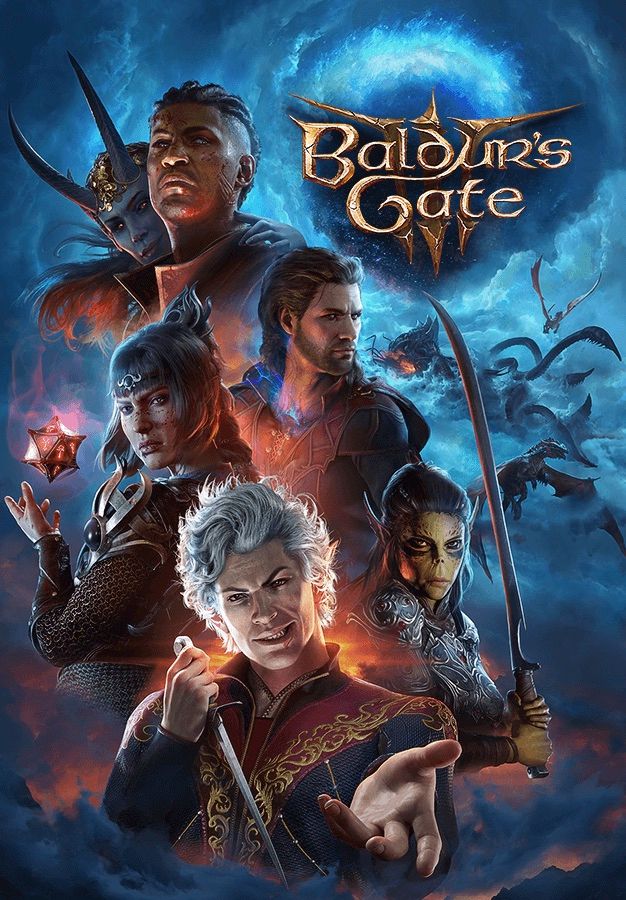
Baldur's Gate 3
Baldur's Gate 3 is a Dungeons and Dragons inspired RPG developed and published by Larian Studios. Featuring both a single player and cooperative element, players create their character by selecting a starting class, take on quests, level up, and engage in turn-based combat using the D&D 5th edition rule set.
Baldur's Gate 3 is currently available on PC, and will release on September 6 for PS5. Game Rant was provided a PC code for this review.

